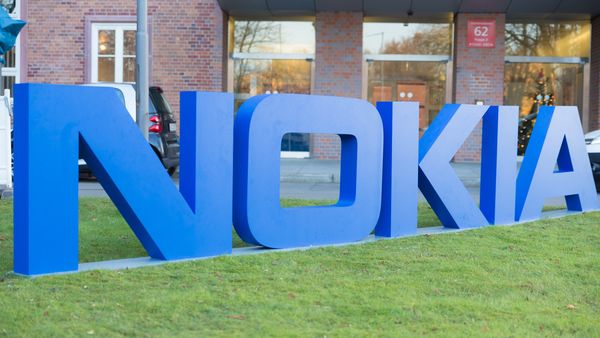
Even the most ambitious projections estimate that 6G networks won’t be rolled out for another five years. Operators are still ramping up their 5G initiatives, and yet, telecom industry players know that this is exactly the time to think ahead to the next standard. Governments around the world already are, as is the EU, which has already begun the second phase of its 6G research and innovation program. Industry players, such as Nokia, DOCOMO and NTT, are working together on the technology, and academic institutions are also ramping up their focus on 6G.
This preparation for the next G needs to run alongside existing efforts to operationalize and commercialize 5G. To play a competitive part in the global connectivity landscape for the next decade or more, telecom industry players know they need to begin aligning their networking capabilities to hit the ground running when 6G does arrive, most likely in or around 2030.
Putting the 5G cart before the 6G horse?
However, for many businesses, preparing for 6G feels premature. They are still not leveraging the full potential of 5G. The 5G footprint is expanding steadily across the globe, but there is still a long way to go and scaling up 5G services is not plain sailing. Spectrum availability, for example, is instrumental in driving 5G development, and major markets like the USA are experiencing shortfalls in bandwidth compared with global peers, according to Analysys Mason. Creaking connectivity infrastructure also presents a considerable technical challenge to businesses wanting to boost their 5G initiatives.
Just as the roadmap to 5G involved a stepping stone from 4G to standalone 5G in the form of LTE and RAN-enabled 5G, so there will need to be an intermediary step on the journey between standalone 5G and 6G. Also known as ‘5G Advanced’, this evolution of the 5G standard is planned for rollout in 2025 and will improve on current 5G capabilities, including innovations such as Wireless AI, which enables increased network automation and network intelligence.
The stepping stone to 6G
Concepts such as autonomous vehicles, smart cities or Industry 4.0 used to be far-off thought experiments. Thanks to the ongoing evolution of the 5G stack, as well as advances in AI/ML, cloud computing and related technologies, these are rapidly becoming mainstream technologies we can expect to see in every car, street, or factory.
In some of these use cases – autonomous vehicles being a prime example – every millisecond of latency counts. For these use cases to function, networks will need to process and exchange vast amounts of data in real-time. The full force of 5G, a fundamental requirement for many of 5G’s most talked-about innovations, will require an uptick in infrastructure investment. This does not just mean more 5G antennas or fiber optic backhauls, it also requires considerably more IT infrastructure in the form of denser, more interconnected data centers and Internet Exchanges.
Indeed, all future use cases involving 5G Advanced – and looking ahead, 6G – depend on far greater interconnectedness to facilitate massive quantities of real-time data processing.
What will 6G look really like?
Moving beyond 5G Advanced, we expect commercial deployments of 6G to begin in 2030. These will feature advances in the capacities, capabilities, and efficiency of future iterations of mobile network technology, driven by the need to support connectivity for use cases like increasingly high-resolution digital twins, and still-to-be-developed technologies, such as Holographic-Type Communication (HTC), which will enable hyper-realistic virtual medical consultations and the beaming of a 3D holographic representation of a participant into a face-to-face meeting.
6G also presents the possibility of ubiquitous global 3D mobile coverage, integrating high-altitude platforms and LEO satellite constellations and providing truly global coverage on land, at sea, and at altitude. While we cannot be sure of any of these capabilities until the next standard begins to get finalized, we have some good indicators based on the current innovations and experiments that major industry players are prioritizing. For example, Nokia is researching sensing capabilities in the 6G mobile network, a development that would make it possible for the network to sense physical objects in its environment and would be transformational in boosting use cases like autonomous driving.
6G’s projected performance numbers are staggering – peak data rates are anticipated in the terabit-per-second range, a massive increase on 5G. Air-interface latency would drop even further, down to between 10 and 100 microseconds. Connection density would increase to 10 million devices per km2, and we can expect 5 times higher radio spectrum efficiency. Here, the caveat is that they require further enabling technologies to be developed, such as terahertz (Thz) communications, visible light communications (VLC) and 3D network architecture.
As well as mind-boggling speeds, the telecom community’s goals for 6G reflect other key global concerns around sustainability. The next standard will likely be designed to be more energy efficient, for example.
What needs to happen next?
Cutting-edge mobile communication technologies hold enormous potential for every industry in every sector globally, operationalizing secure and efficient digital use cases across business as well as people’s private lives. However, realizing these benefits hinges on the development of connectivity infrastructure to support the seamless transfer of vast volumes of data at high bandwidth and very low latency, both wirelessly and through the Internet backbone. Building out the supporting infrastructure will require mobile hardware investment to go hand in hand with more densely distributed, automated, and highly scalable Internet Exchanges, for example, to connect mobile networks to fixed-line and satellite networks and to the content, apps, and services that 6G enables.
We've featured the best business smartphone.
This article was produced as part of TechRadarPro's Expert Insights channel where we feature the best and brightest minds in the technology industry today. The views expressed here are those of the author and are not necessarily those of TechRadarPro or Future plc. If you are interested in contributing find out more here: https://www.techradar.com/news/submit-your-story-to-techradar-pro










